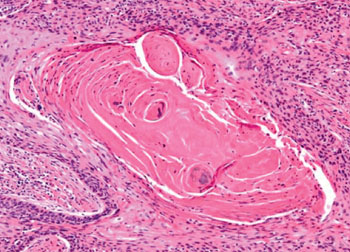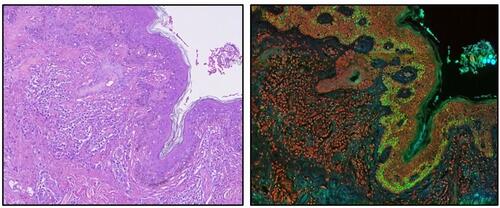Head and Neck Tumors DNA Detected in Body Fluids
By LabMedica International staff writers
Posted on 07 Jul 2015
The potential of tumor-specific DNA as a biomarker for head and neck squamous cell carcinomas (HNSCC) has been explored in both saliva and blood samples.Posted on 07 Jul 2015
Although HNSCC tumors are usually classified on the basis of histology, their biomedical properties, including demographics, risks factors, and clinical behavior, differ by anatomical site.

Image: Histopathology of Laryngeal Squamous Cell Carcinoma (Photo courtesy of Nikon).
Cancer specialist at different institutes and led by those at Johns Hopkins University School of Medicine (Baltimore, MD, USA) studied 93 patients with newly diagnosed and recurrent head and neck cancer who gave saliva samples and 47 of them also donated blood samples before their treatment. Saliva was collected using two different protocols and blood samples were processed for plasma. When fresh tumor tissue from a surgical specimen of invasive SCC was available, it was immediately frozen at −80 °C. When frozen tissue was not available, formalin-fixed, paraffin-embedded (FFPE) tissues were used for DNA purification.
The teams also searched for somatic mutations or human papillomavirus (HPV) genes, collectively referred to as tumor DNA. Massively parallel sequencing was carried out on a HiSeq instrument (Illumina; San Diego, CA, USA). When no HPV was present, multiplex polymerase chain reactions (PCRs) containing primers amplifying regions of interest in six cancer-related genes that were used to identify driver mutations in the tumors. Blood tests correctly identified HPV-related tumors, occurring in 30 of the 93 patients, more often than saliva tests, probably because HPV-related tumors tend to occur in the back of the throat, which may not have been reached with the saliva rinse.
The scientists detected tumor DNA in the saliva of 71 of the 93 patients (76%) and in the blood of 41 of the 47 (87%). In the 47 who gave blood and saliva samples, scientists were able to detect tumor DNA in at least one of the body fluids in 45 of them (96%). Blood tests correctly identified tumor DNA more often in 20 of 22 oropharynx cancers (91%), six of seven larynx cancers (86%) and all three hypopharynx cancers. Taken together, blood and saliva tests correctly identified all oral cavity, larynx and hypopharynx cancers and 20 of 22 oropharynx cancers (91%).
Nishant Agrawal, MD, an associate professor of otolaryngology and senior author of the study said, “We have shown that tumor DNA in the blood or saliva can successfully be measured for these cancers. In our study, testing saliva seemed to be the best way to detect cancers in the oral cavity, and blood tests appeared to find more cancers in the larynx, hypopharynx and oropharynx. However, combining blood and saliva tests may offer the best chance of finding cancer in any of those regions.” The study was published on June 24, 2015, in the journal Science Translational Medicine.
Related Links:
Johns Hopkins University School of Medicine
Illumina











.jpg)

